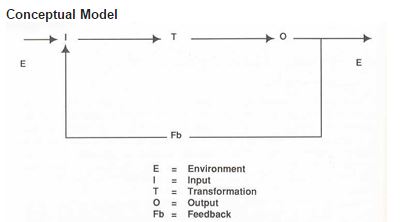Elements of a communication system
Everything around us is being divided into various associations by which we categories into various systems.
The systems theory is associated with unification of happenings detached from their subsistence.
A system always will have an entity depending on the nature of the system. This entity within the system will have some general qualities and will also hold a bond between them.
The study of systems can follow two general approaches
with a focus on the interactions that take place between two systems
with a focus on the changes in a system over time (or you know… the development of the system, hence the name)
The rise of systems theory
After World War II social scientists became intrigued by system notions. These models fundamentally altered how relationships between variables were understood.
But most 1960s social systems theorists acknowledged that the greatest and most recent impetus toward the development of systems theories came from an engineering subfield known as CYBERNETICS, the study of regulation and control in complex machines.
System theory is the transdisciplinary study of the abstract organization of phenomena, independent of their substance, type, or spatial or temporal scale of existence.
It investigates both the principles common to all complex entities, and the (usually mathematical) models which can be used to describe them.
A system can be said to consist of four things.
The first is objects – the parts, elements, or variables within the system. These may be physical or abstract or both, depending on the nature of the system.
Second, a system consists of attributes – the qualities or properties of the system and its objects.
Third, a system had internal relationships among its objects.
Fourth, systems exist in an environment. A system, then, is a set of things that affect one another within an environment and form a larger pattern that is different from any of the parts.
The fundamental systems-interactive paradigm of organizational analysis features the continual stages of input, throughput (processing), and output, which demonstrate the concept of openness/closedness.
A closed system does not interact with its environment. It does not take in information and therefore is likely to atrophy, that is to vanish.

Types of communication systems
1.Analog
Analog technologies transmit data between people or machines as electronic signals of various frequencies or amplitudes.
Examples :Telephone and radio transmission.
2.Digital
The information is generated and processed in two states(high and low). The digital technology stores and transmits data in the form of 0s and 1s.
Types of communication channel
1.Wired communication
a.Parallel wire communication.
b.Twisted wire communication.
c.Coaxial cable communication.
d.Optical fibre communication.
2.Wireless communication
a.Ground wave communication.
b.Skywave communication.
c.Space wave communication.
d.Satellite communication.
Communication medium
Basically, communication medium is a channel that is used to transmit the signal from transmitter to receiver. For example copper wire and satellite.
Signal
Signal is the data or information which is transmitted and received by the receiver. It is transmitted electronically.
Amplitude
Amplitude is the signal height or strength in transmission. The signals should be strong in both transmission and reception. The weak signal is amplified and phenomenon is called amplification.
Attenuation
Attenuation is the process in which the amplification of the signal is decreased. It is attenuated when transmitted for long distances. In this electronic communication system, the critical device is the transducer.Transducers
Transducer is the electrical device that transforms the physical quantity into electrical quantity.
Transducer consists of two elements(sensing and transduction). For example, the transducer transforms the non-electrical quantity like light, heat, into the electrical quantity.
Transducers types
Active and passive
Analog and digital
Primary and secondary
